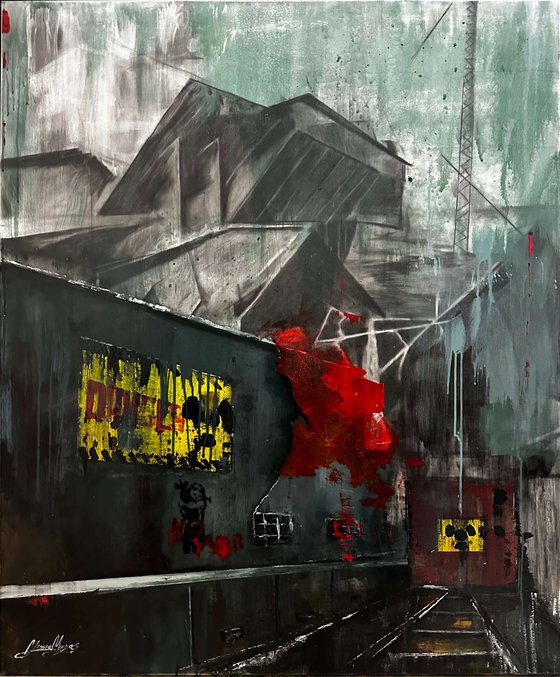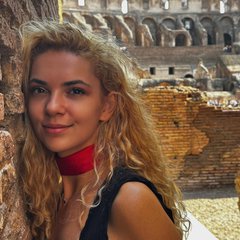Main Navigation
Original artwork description:
In an urban landscape devoured by shadows and ash, one question hangs suspended:
what happens to the world after it forgets how to look toward the light?
The bunker, the crumbling walls, the traces of graffiti — they all bear the memory of a civilization that hid from its own conscience.
The inscription No War is not merely a call for peace, but a testimony of intimate resistance — of those who chose not to become shadows.
The work speaks of the toxicity of time lived without meaning, of the wounds of the past that still pulse within the present.
As Heidegger once said, “Time is not something that passes, but that which makes our existence in the world possible.”
In this ruined space, time becomes the very substance of memory: it corrodes, but it also preserves.
The viewer is invited to step into this world as into a bunker of one’s own conscience — where the echo of the past intertwines with the question of the future:
How much is our time worth?
More than money, time is the secret weapon of rebirth.
Let us give time some time — and perhaps, from the toxic shadows, light will rise again.
The past does not disappear; it hides beneath layers of rust and silence.
No War here becomes an echo of conscience — a call for lucidity in a world that hides within its own shadows.
The work speaks not only of the toxicity of time lived without purpose,
but also of the courage to look ahead.
Time is more precious than money — it is the secret weapon of renewal.
Let us give time some time.
Time does not erase the traces of the past —
it only buries them beneath layers of rust and silence.
In the toxic shadow of what once was,
who still dares to look forward?
“Time does not erase the traces of the past — it only buries them beneath layers of rust and silence.”
Materials used:
Pencil, charcoal, acrylic and vernice.
Toxic Shadows (2024) Acrylic painting
by Alessia Mogos
£3,515.2
- Acrylic painting on Canvas
- One of a kind artwork
- Size: 100 x 120 x 3cm (unframed) / 100 x 120cm (actual image size)
- Ready to hang
- Signed certificate of authenticity
- Style: Abstract
- Subject: Abstract and non-figurative
Loading
Original artwork description
In an urban landscape devoured by shadows and ash, one question hangs suspended:
what happens to the world after it forgets how to look toward the light?
The bunker, the crumbling walls, the traces of graffiti — they all bear the memory of a civilization that hid from its own conscience.
The inscription No War is not merely a call for peace, but a testimony of intimate resistance — of those who chose not to become shadows.
The work speaks of the toxicity of time lived without meaning, of the wounds of the past that still pulse within the present.
As Heidegger once said, “Time is not something that passes, but that which makes our existence in the world possible.”
In this ruined space, time becomes the very substance of memory: it corrodes, but it also preserves.
The viewer is invited to step into this world as into a bunker of one’s own conscience — where the echo of the past intertwines with the question of the future:
How much is our time worth?
More than money, time is the secret weapon of rebirth.
Let us give time some time — and perhaps, from the toxic shadows, light will rise again.
The past does not disappear; it hides beneath layers of rust and silence.
No War here becomes an echo of conscience — a call for lucidity in a world that hides within its own shadows.
The work speaks not only of the toxicity of time lived without purpose,
but also of the courage to look ahead.
Time is more precious than money — it is the secret weapon of renewal.
Let us give time some time.
Time does not erase the traces of the past —
it only buries them beneath layers of rust and silence.
In the toxic shadow of what once was,
who still dares to look forward?
“Time does not erase the traces of the past — it only buries them beneath layers of rust and silence.”
Materials used:
Pencil, charcoal, acrylic and vernice.
14 day money back guaranteeLearn more

